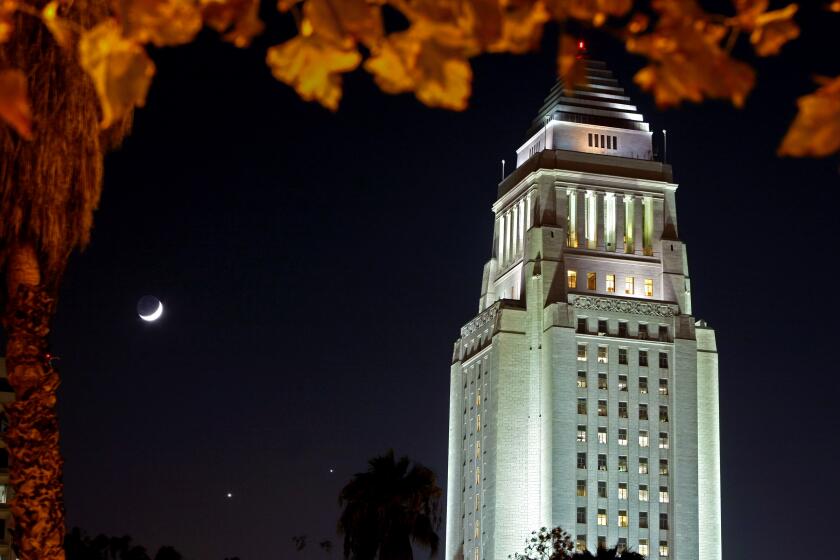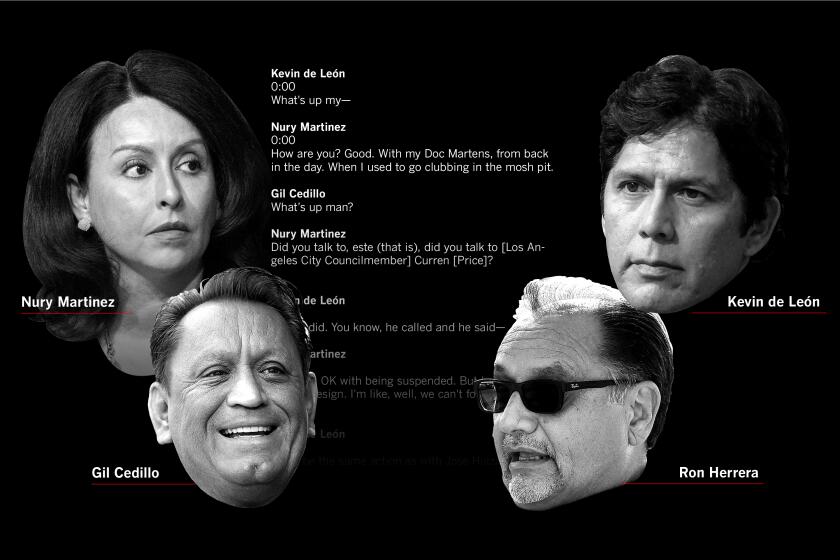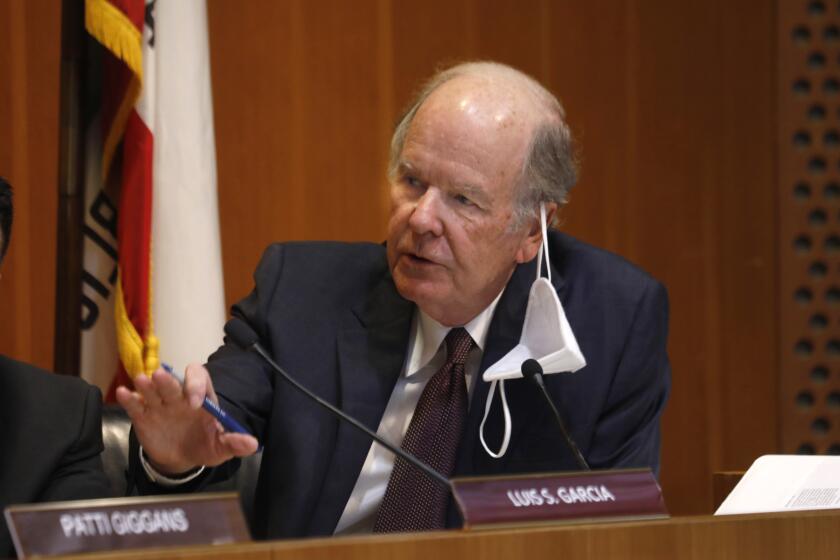The L.A. City Council is looking to expand. Getting there could take nine years
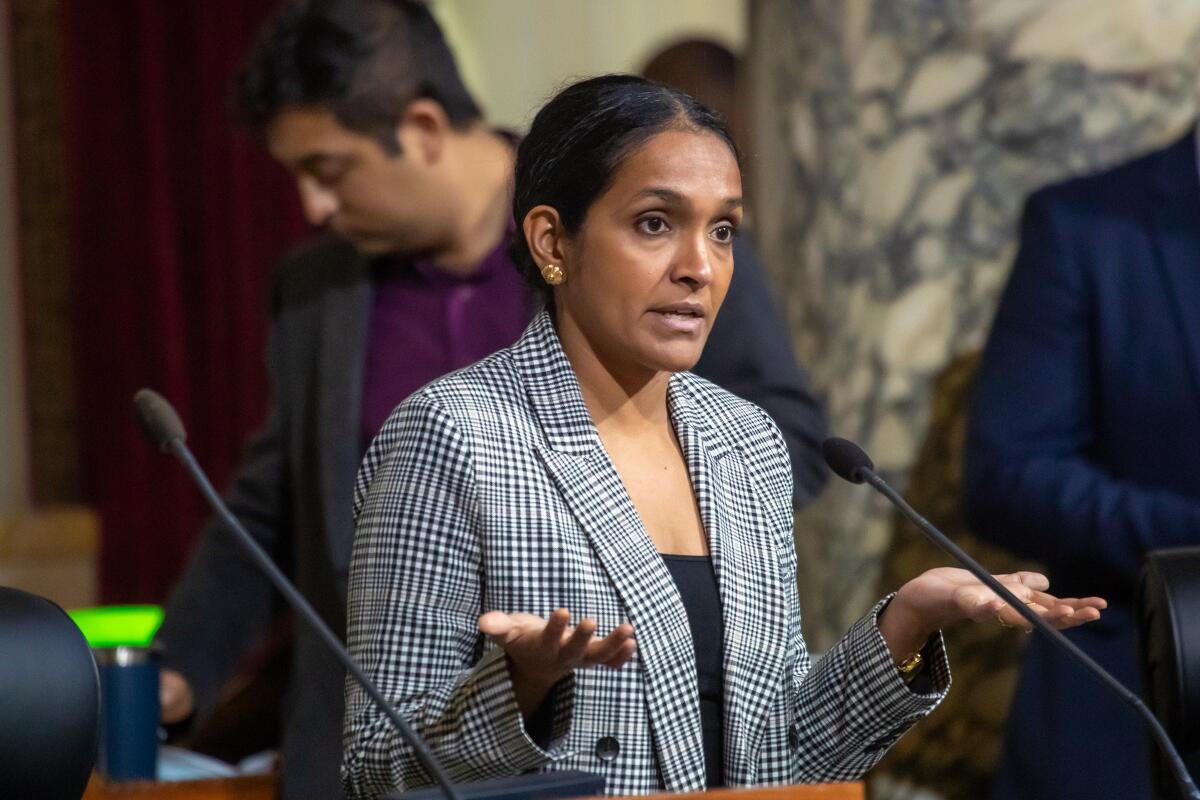
- Share via
For much of the past year, Los Angeles political leaders have been laying the groundwork for a potentially seismic change in city government: increasing the size of the City Council for the first time in a century.
Some, including council President Paul Krekorian, have begun arguing in favor of expanding the council to 23 members, up from 15. Others, such as Councilmember Nithya Raman, are looking at whether to more than double the council’s size, swelling its ranks to 31 members.
The push for more council members has been fueled by a spate of City Hall scandals. Yet even if voters sign off on the final plan for adding more politicians — a proposal expected on next year’s city ballot — they could end up waiting nearly a decade for that change to go into effect.
That’s because council members are also weighing the idea of holding elections for the new, larger council in 2032, more than a decade after the audio leak scandal that sparked new demands for reform — and transformed council expansion into a front-burner issue at City Hall.
If the council selects 2032 as the implementation date, the city would be spared from having to oversee an extra redistricting process, which would require a citizen panel to spend, at minimum, several months drawing new boundaries for each council district.
The council currently has 15 members, each of whom represent more than a quarter-million people.
Redistricting normally occurs once every 10 years, following the release of new U.S. Census population data. The next regularly scheduled redistricting is set to occur in 2031.
If the council were expanded before that date, an extra map-making process would be needed to ensure that each council district is roughly equal in population size and in compliance with the Voting Rights Act, which seeks to ensure that racial minorities have an opportunity to elect a representative of their choice.
Raman, whose district is anchored by the Hollywood Hills, said recently that she has been leaning in favor of 2032 as the year to carry out council expansion. In an interview, she said conducting an extra redistricting process sooner than that — most likely in the run-up to the 2026 election — could be disruptive for the city.
“I would have loved for these [new council] boundaries to have come in more quickly,” she said. “But I also know, having gone through redistricting once, that it is a long — and can be a very disruptive — process for residents. I think having it happen once, when the new census numbers come out, feels like the least disruptive way to move forward.”
During the city’s last redistricting process, Raman spent several weeks fighting a proposal from a citizen commission that would have dramatically redesigned her district. Although the council later went with a different map, Raman still lost 40% of her old district.
Raman said she remains “open to discussion” on either date for council expansion — 2026 or 2032. Meanwhile, the reform organization known as California Common Cause has come out firmly in favor of 2032, saying such a schedule would give the city plenty of time to establish a “fair, transparent, and equitable” redistricting process.
Russia Chavis Cardenas, the group’s voting rights and redistricting program manager, said city officials should use those years to recruit and select new redistricting commissioners, hire and train redistricting staff and create a new office at City Hall to analyze U.S. Census data.
Some advocacy groups have taken a different view, saying voters shouldn’t have to wait so long for urgently needed reform.
Scheduling council expansion for 2032 would benefit many of the council’s incumbents, ensuring their districts remain unchanged when they run for reelection between now and 2030, said Rob Quan, an organizer with Unrig LA, an anti-corruption group.
“Some of them don’t want this to impact them during their time on the council,” said Quan, who is pushing for council expansion to go into effect in 2026.
The council’s ad hoc committee on government reform is set to meet next week to review expansion proposals ranging from 21 to 31 council members. The final ballot language is expected to reach voters in November 2024, when the presidential election is expected to generate especially high voter turnout.
Under the current system, each of the council’s districts is assigned about 265,000 people. If the council expands to 21 members, the number of constituents would shrink to about 189,000 per district. If the council grows to 25 members, the number of constituents would fall to about 159,000. With a 31-member council, each district would have roughly 128,000 residents.
Good-government advocates have long made the case that a larger council would be more responsive, more representative of its population and less susceptible to the kind of corruption that has resulted in the convictions of three council members since 2020. Those arguments picked up steam last year after three other council members and a high-level labor leader were revealed to have engaged in a secretly recorded conversation about redistricting that featured racist and derogatory language.
During the discussion, recorded in 2021, the four participants — Ron Herrera, then in charge of the L.A. County Federation of Labor, then-Councilmembers Nury Martinez and Gil Cedillo, and Kevin de León, who remains on the council — discussed ways of drawing council districts that would benefit either themselves or their allies.
Quan, the Unrig LA organizer, said he believes the final maps are “tainted” and should be replaced as soon as possible. He also contends that since U.S. Census data is already available, the city could launch a new redistricting process in 2025 and have a new set of maps ready for the June 2026 election.
A bombshell recording has thrown L.A. politics into chaos. What was really being discussed? L.A. Times reporters and columnists pick it apart, line by line.
For a majority of the council’s current members, such a process would be unpredictable.
Council members are currently working to ensure that the next redistricting process is entirely handled by an independent citizens panel, a change that would bar council members from having final say over the contours of each district. With an independent citizen commission in charge of the map-making process, the council’s current members could find themselves in redrawn districts that are quite different from the ones they currently represent.
If, on the other hand, council expansion were delayed until 2032, 10 of the council’s current members would retain the ability to run for reelection in their existing districts two more times.
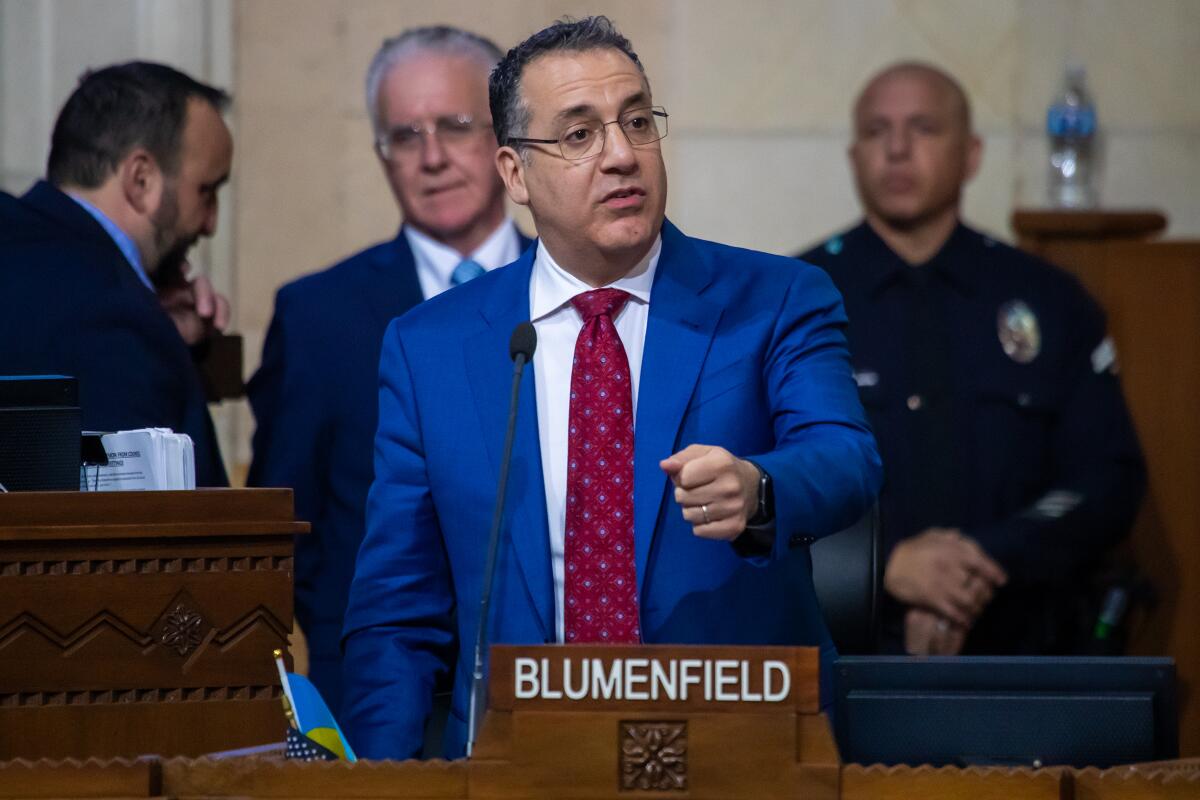
David Levitus, executive director of the nonprofit LA Forward Institute, said he sees some self-interest in the effort to schedule council expansion for 2032. Increasing the size of the council, he said, would instantly diminish the political power wielded by each of the council’s current members.
“Obviously there’s elected officials on the council who would be very happy to maintain the current district formations and council district size” for several more years, said Levitus, whose group is pushing for council expansion to take place in 2026. “The status quo is easier for them than moving toward a new system quickly.”
Still, at least one termed-out council member said he too is leaning toward 2032 as the year for the council expansion.
Councilmember Bob Blumenfield, now partway into his third and final term, said he believes the city bureaucracy will need extra time to accomplish all of the infrastructure changes that would come with council expansion, such as the construction of new office space and redesigning the system for funding each district.
“It’s not that it can’t be done” by 2026, Blumenfield said. “But it’s a lot to do within the two years.”
More to Read
Sign up for Essential California
The most important California stories and recommendations in your inbox every morning.
You may occasionally receive promotional content from the Los Angeles Times.
